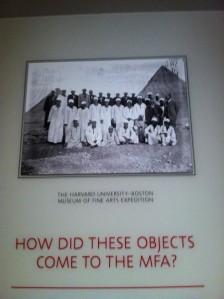Over the course of the past few weeks, I’ve talked quite a bit about partage. I mentioned that some believe partage should be reinstated.
James Cuno is one of the most outspoken proponents of reinstating partage. He is in favor of what he terms “encyclopedic” museums; museums that allow the visitor to view objects from all over the world in one place. This creates a deeper understanding of our similarities and differences as people, and can help breakdown close-minded views. These museums can show that our culture is not the shining ideal, but is rather one among many. In order for such places to exist, museums must be able to acquire objects from other countries. An updated version of partage might be a way to facilitate this, while giving the source nation a choice, and valuing the archaeological process.
Yet, as David Gill points out in his blog Looting Matters, there are other ways of sharing cultural heritage. Long or short term loans, for example. Is there an inherent good to museums owning artifacts, rather than just having them on loan? In terms of research, I can see some benefit in actual ownership, although loans can certainly also include research components.
Cultureboyy also has a fantastic essay here. He outlines especially well why partage may be thoroughly outdated, and even seen as institutionalized looting. He also offers some alternative suggestions.
Should countries be able to control all of their own national cultural heritage, or should we work towards and international understanding of “world” heritage? Or, would partage be a way of getting the best of both worlds?
Now it’s time for you to tell me your thoughts on the matter!


